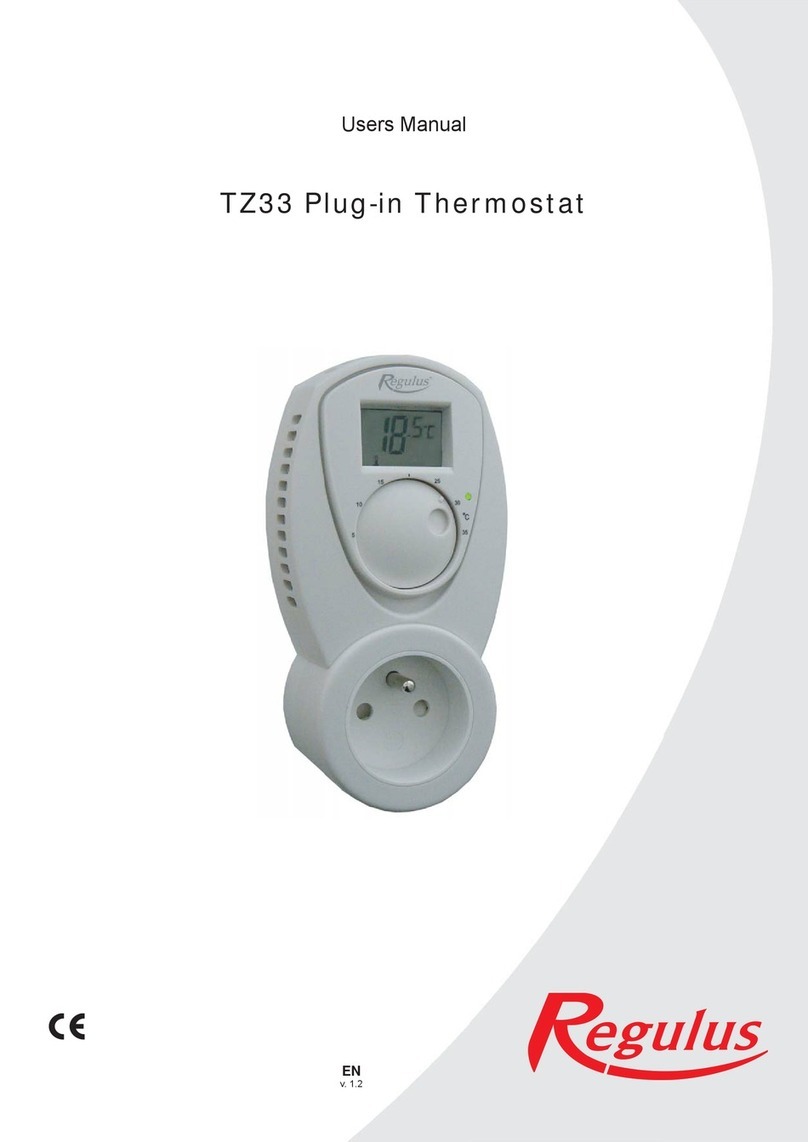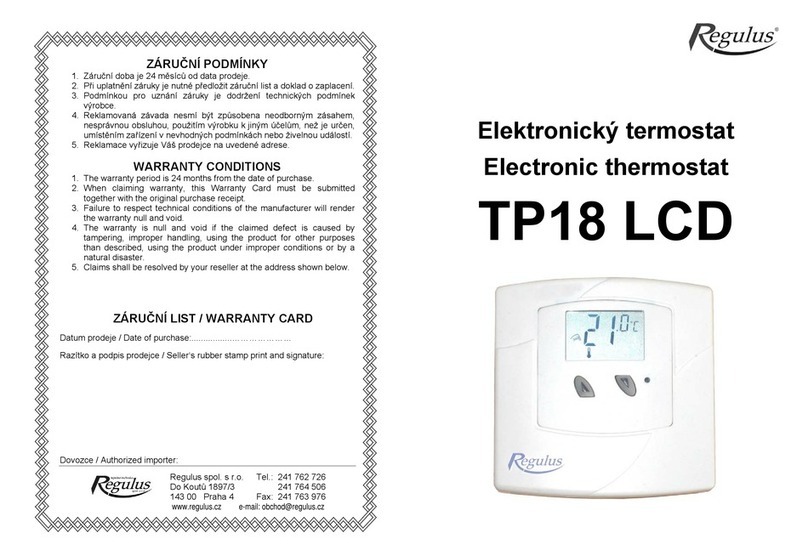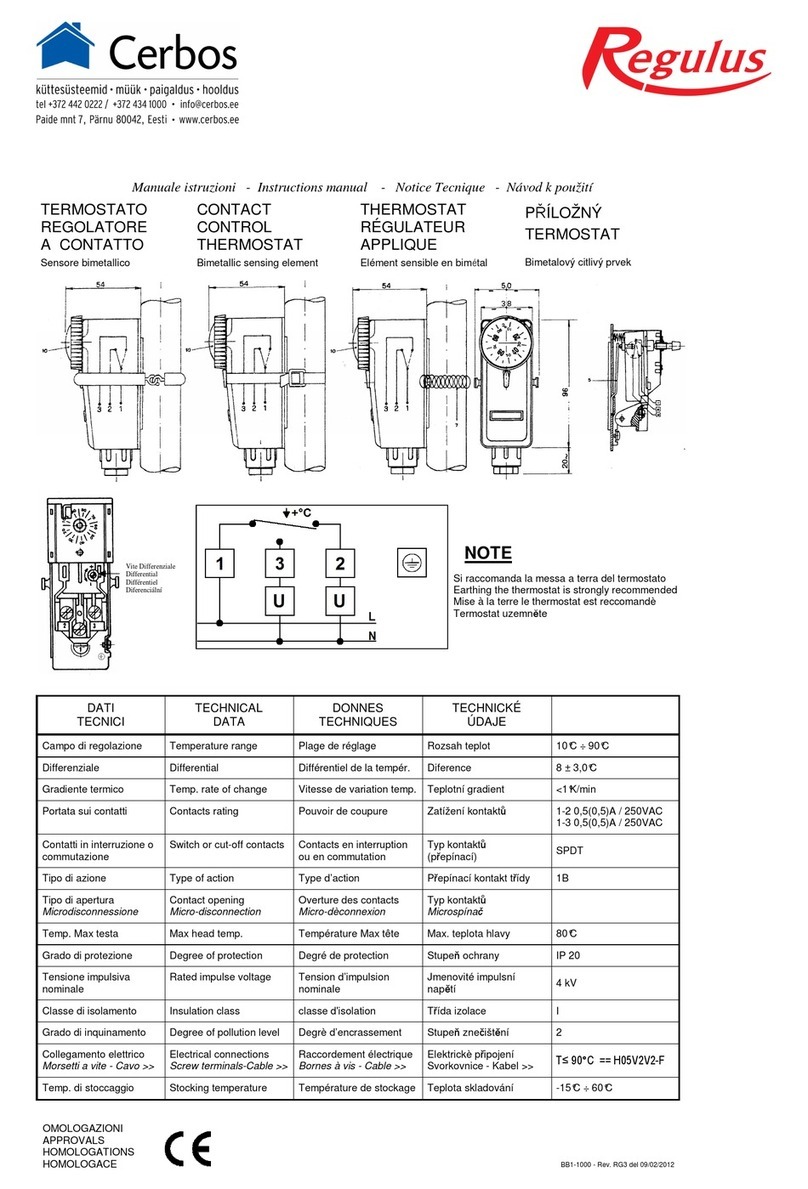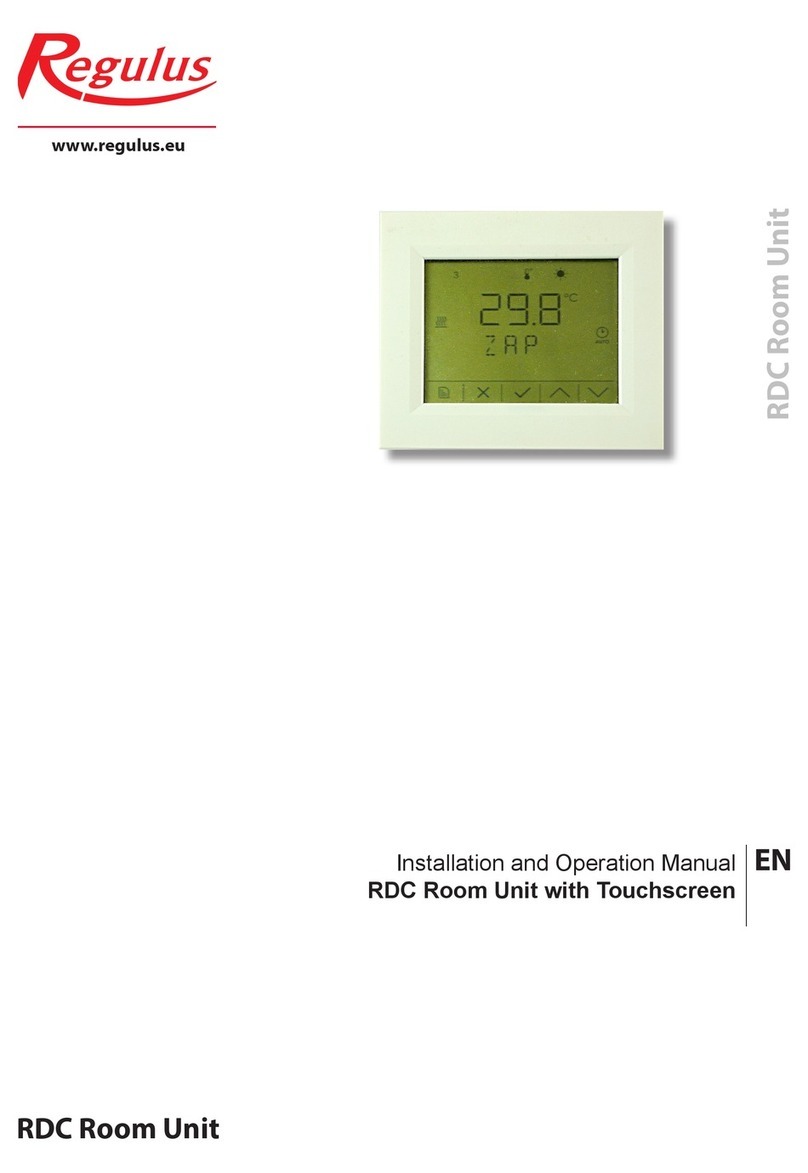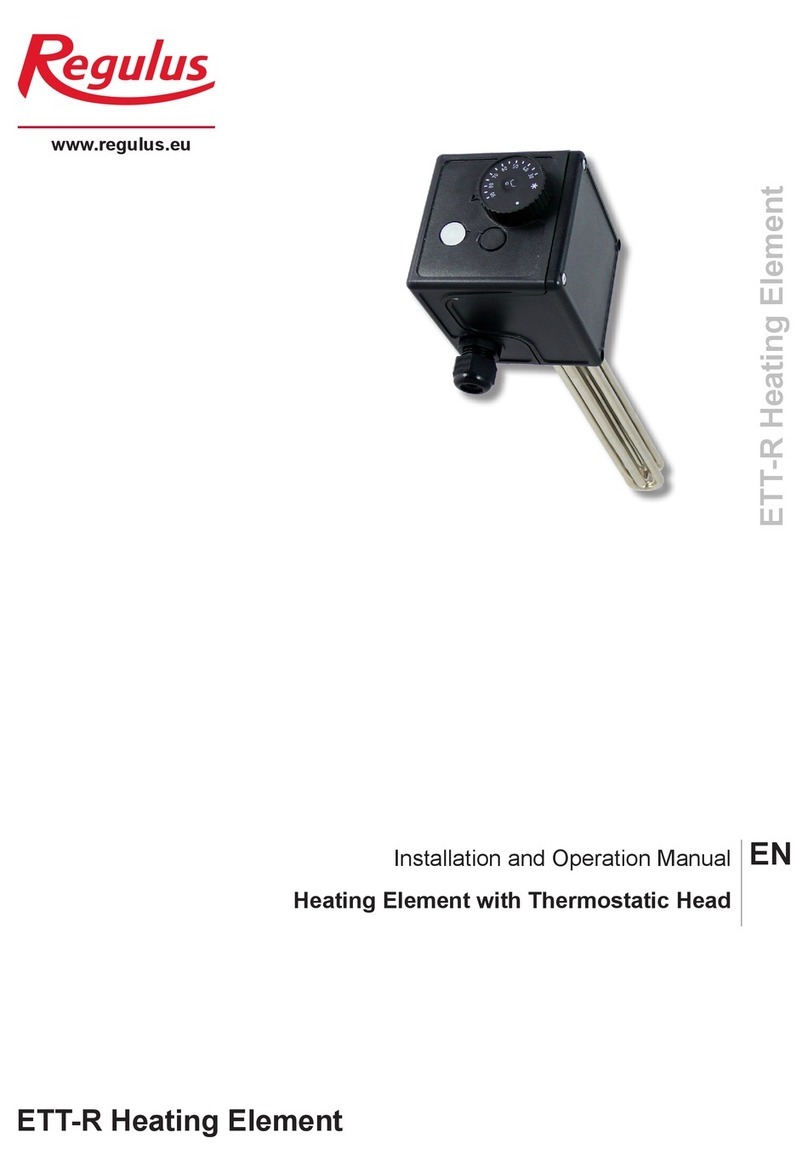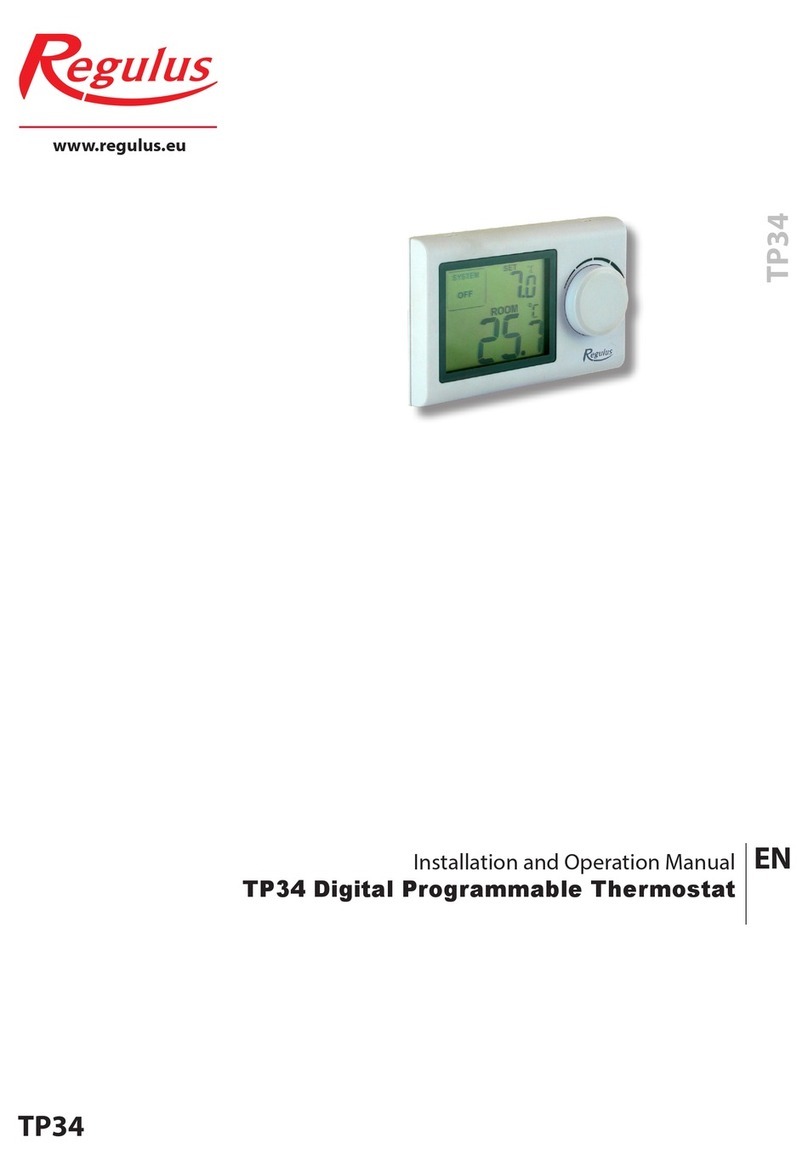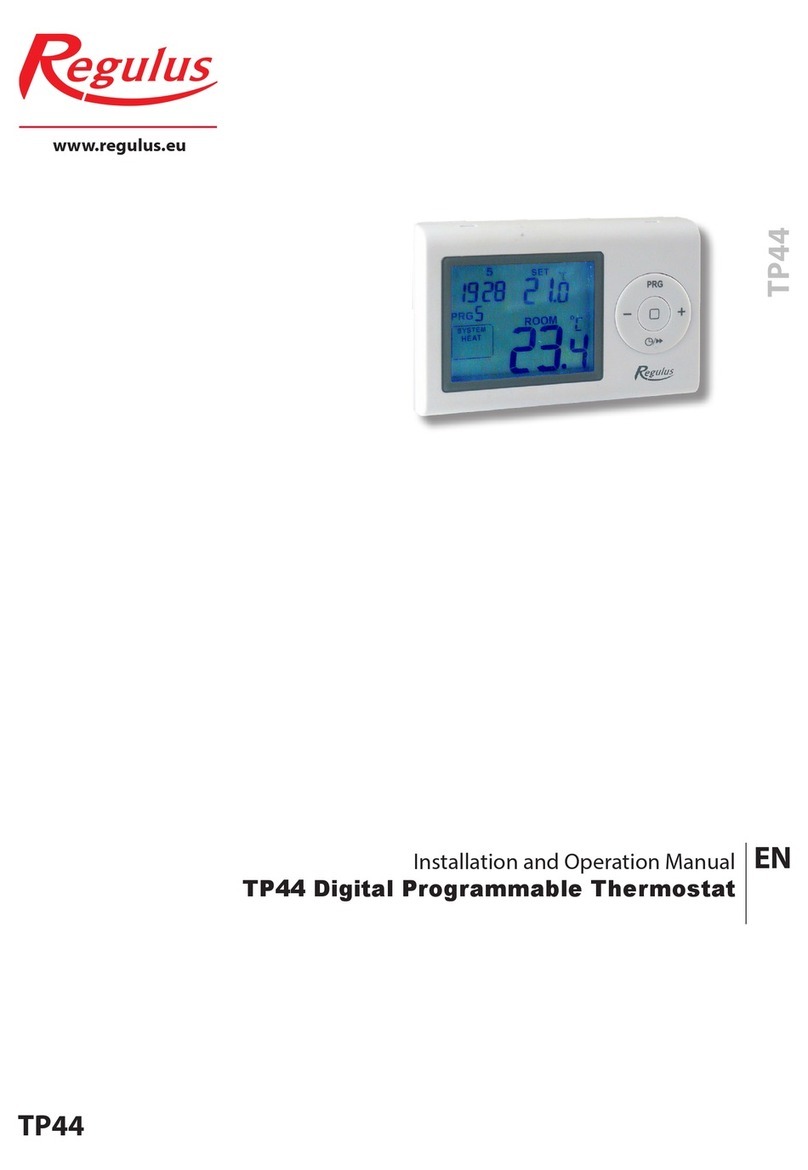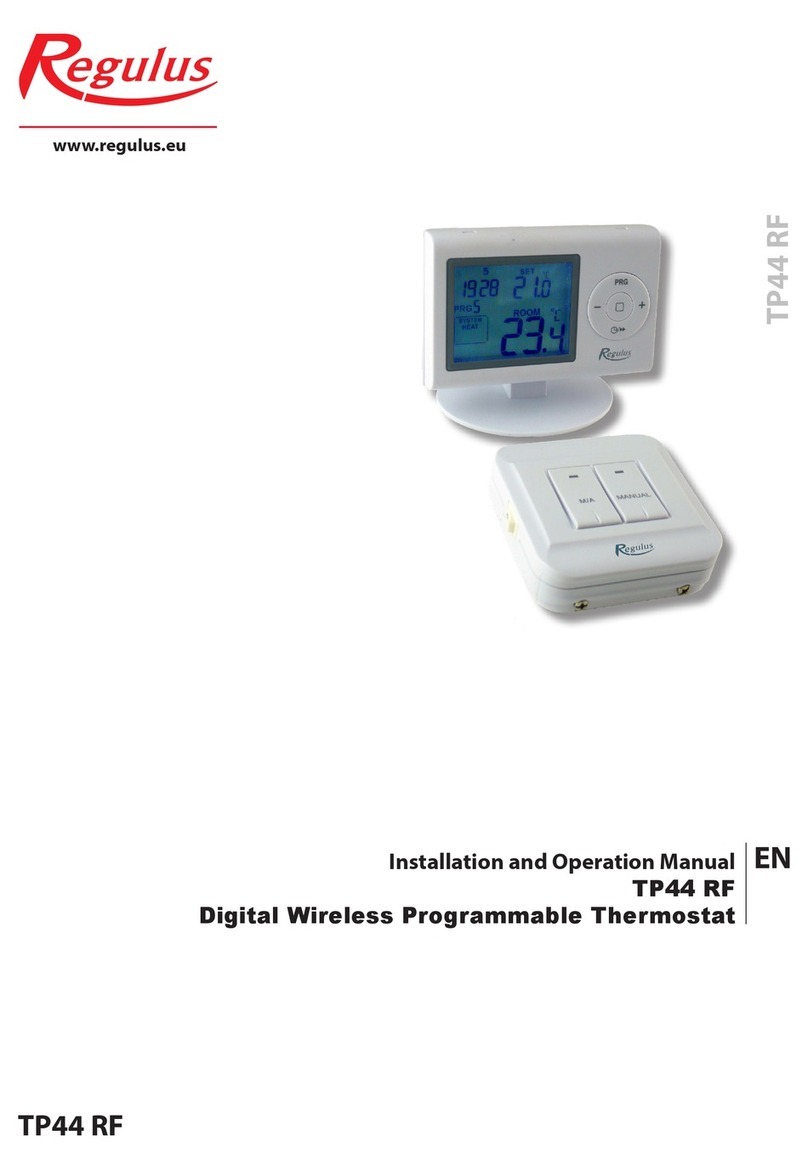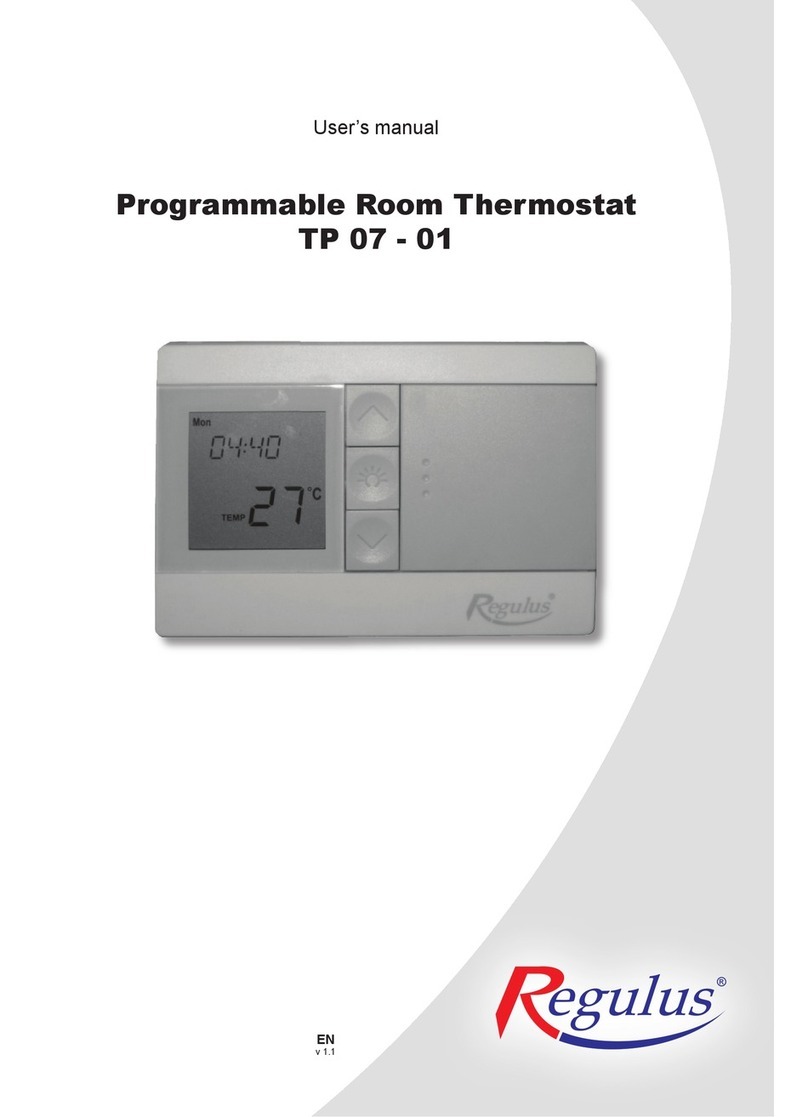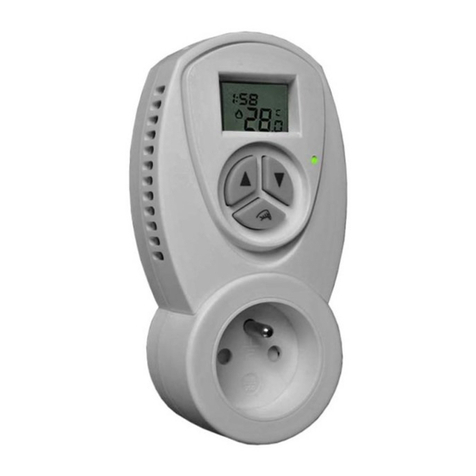
1. Description
The wireless digital thermostat is suitable to control temperature in a living room and is very easy to use. It
allows you to control heating or cooling when the room temperature is lower or higher than set by the user.
Installation is very easy thanks to the step-by-step instructions.
IMPORTANT: Installation of the equipment must be performed by a trained specialist. The user manual
is intended for authorized operators.
IMPORTANT: Please read the instructions carefully before installation and follow the instructions
provided when using the thermostat.
Recommendation regarding batteries
• Use only batteries of the specied type.
• Make sure that you insert the batteries as marked in the appropriate compartment. Inserting batteries
with reverse polarity can damage the thermostat.
• Do not mix batteries of dierent types, e.g. alkaline with zinc-carbon batteries or old ones with new
ones.
• If you know that the thermostat will not be used for a long time, remove the batteries to prevent damage
to the thermostat by leakage.
Recommendations regarding installation and use of the thermostat
• This thermostat is intended for indoor use only (rooms, garages, verandas). Do not place it outdoors, do
not expose it to rain.
• Do not place it in high humidity areas.
• It should be installed on an inner wall, about 1,5 m above the oor, located where room temperature
changes can be felt thanks to freely circulating air.
• Do not install above a heat source (a TV set, heater, fridge etc.) or to places where it may be exposed to
direct sunshine, draught, radiation from other devices.
• This thermostat can control only one device. Connecting several devices in cascade or in series (e.g. a
heater and fan) does not guarantee its proper functioning.
• Turn o the power before connecting any equipment.
• Be extremely careful when connecting the equipment and power; improper connection or insucient
shielding of electrical cables can damage the equipment and endanger your safety.
Note: The manufacturer disclaims any liability for damage caused by improper installation or use of the device
contrary to the instructions.
2. Specifications (code 17169)
Transmitter (Thermostat)
1. Programmable: no
2. Displayed temperature range: 0-40 °C (in 0.1 °C increments)
3. Adjustable temperature range: 5-35 °C (in 0.5 °C steps)
4. Temperature measurement accuracy: ±1 °C (at 20 °C)
5. Power supply: 2x 1.5A AAA batteries, alkaline (not enclosed)
6. Load: 6(2) A, 230 V
7. Low Battery Indication: When the battery voltage drops below 2.7 volts, the symbol appears.
8. Standby power consumption: 30 μA, backlight ≤5,5 mA
9. Backlight colour: white
10. Dimensions: 120 x 77 x 28 mm (without support)
Transmitter - batteries 2x1,5 V Receiver - 230 V AC
